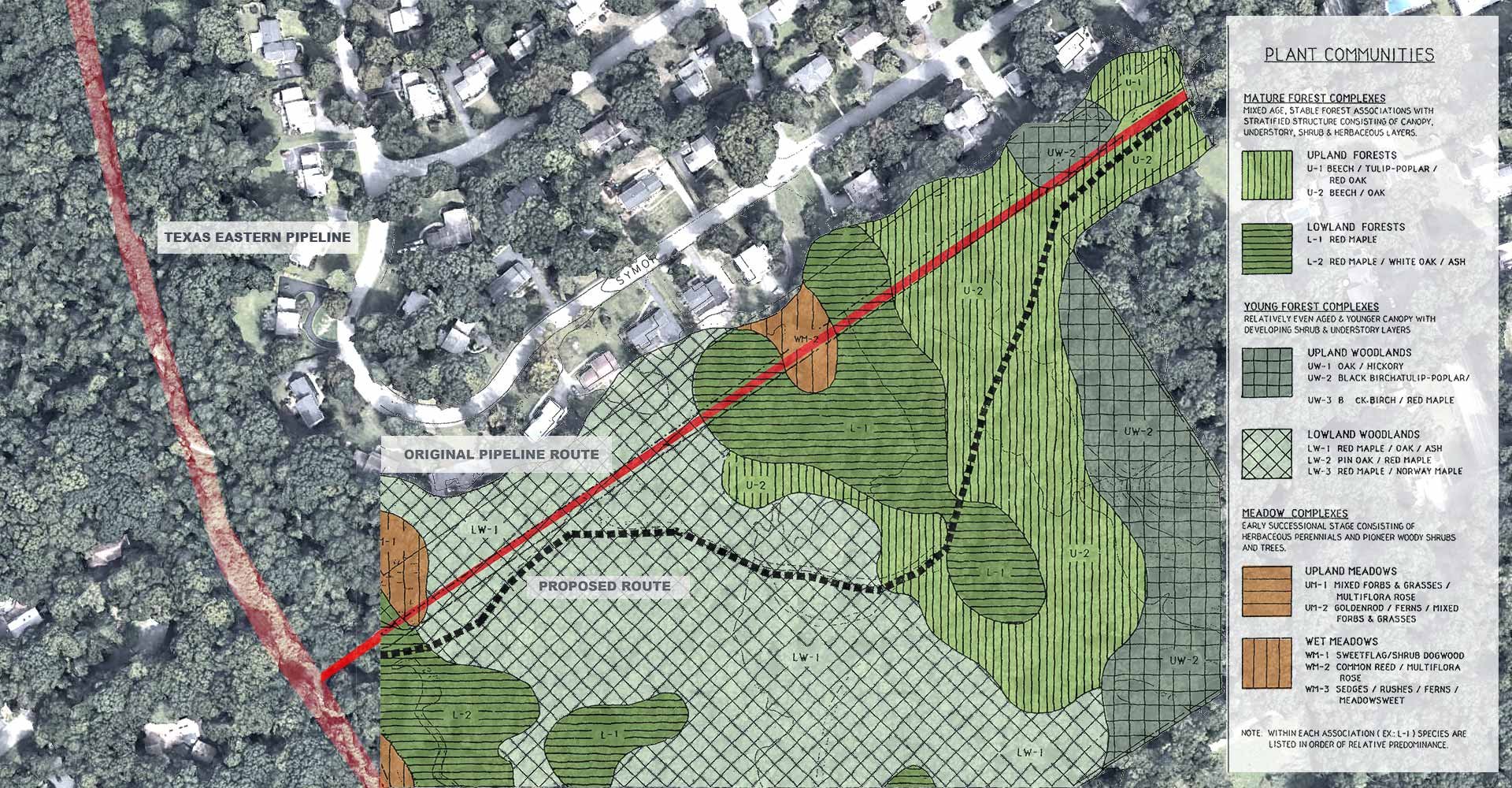
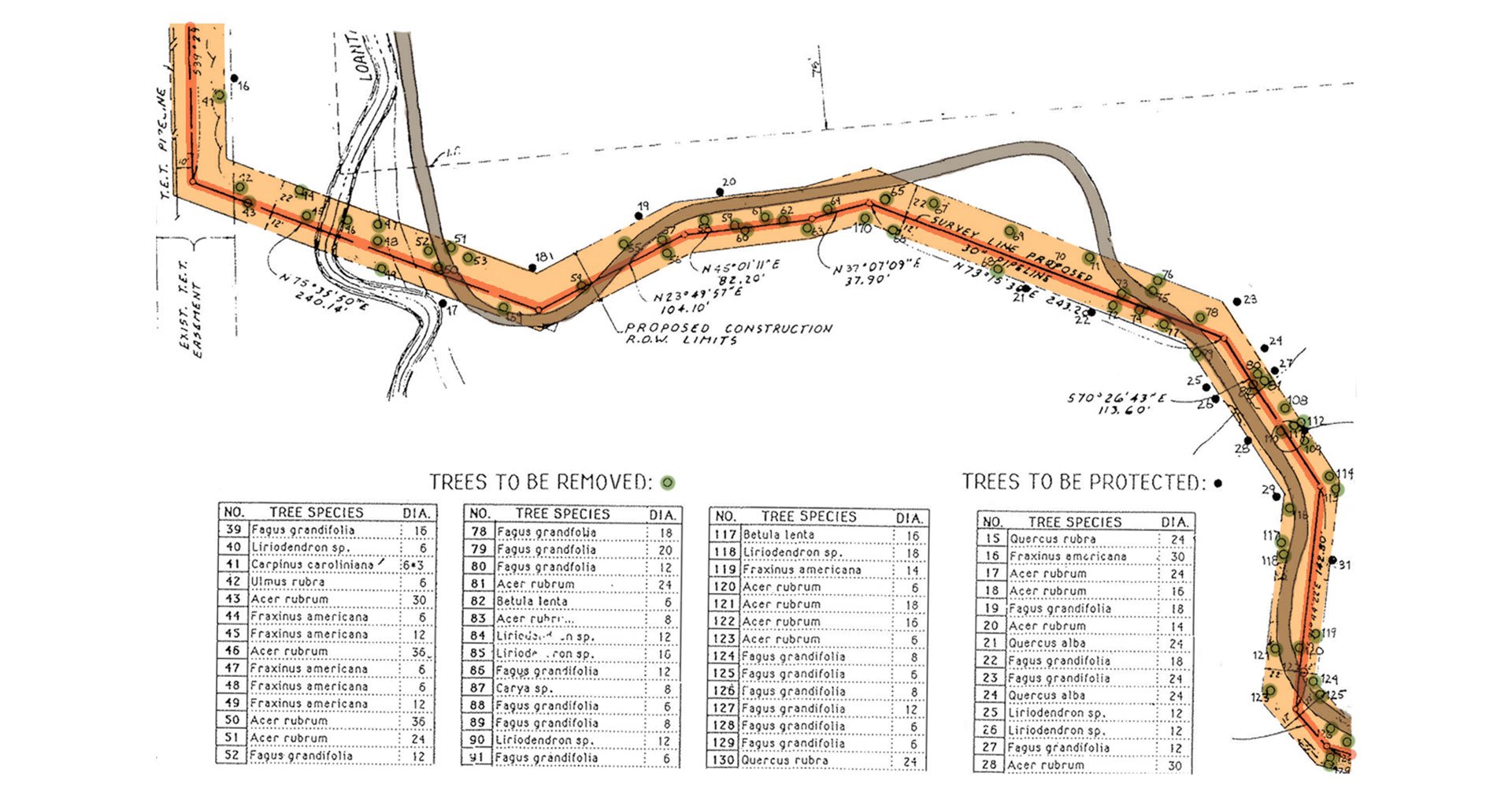
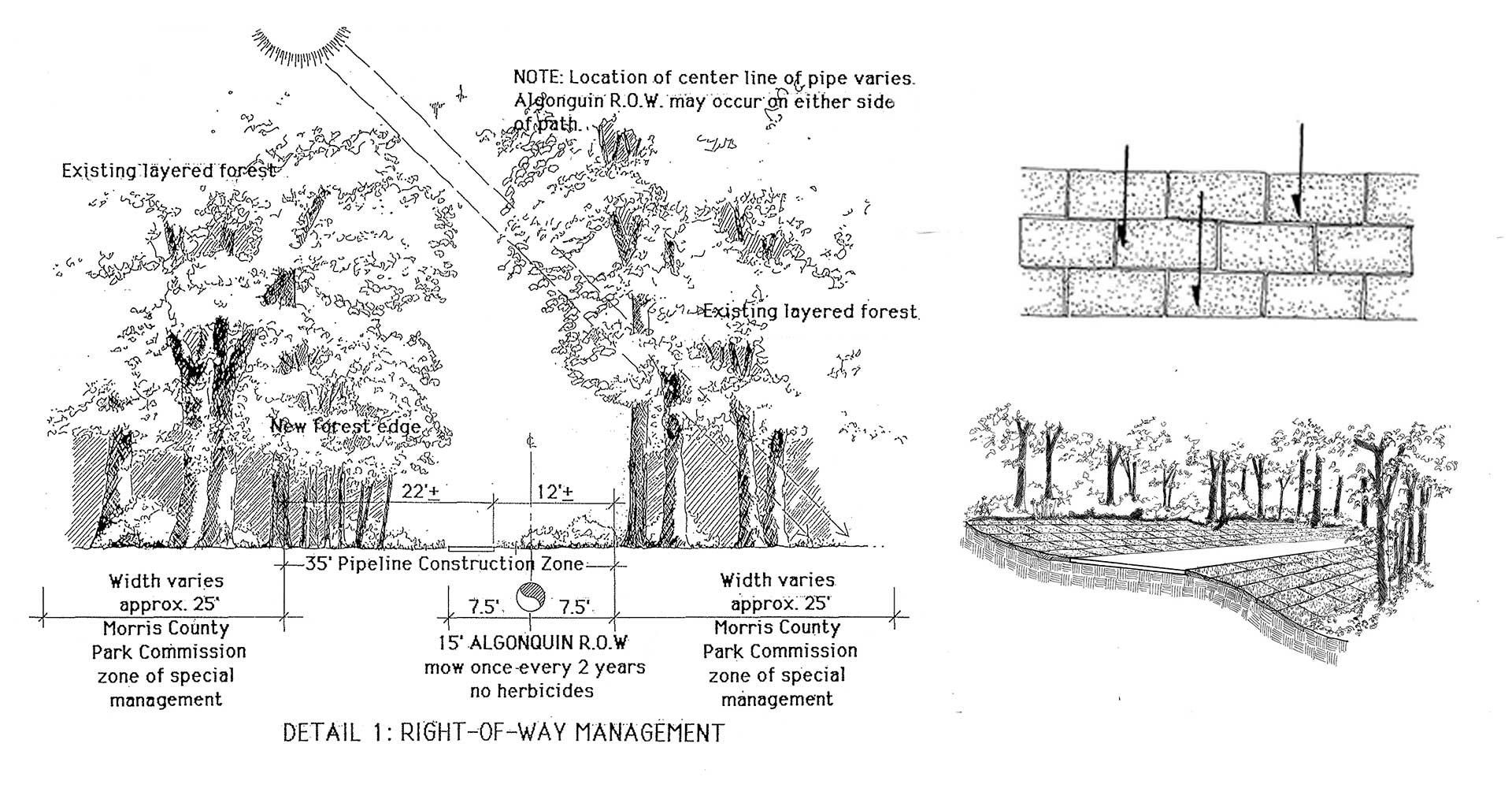
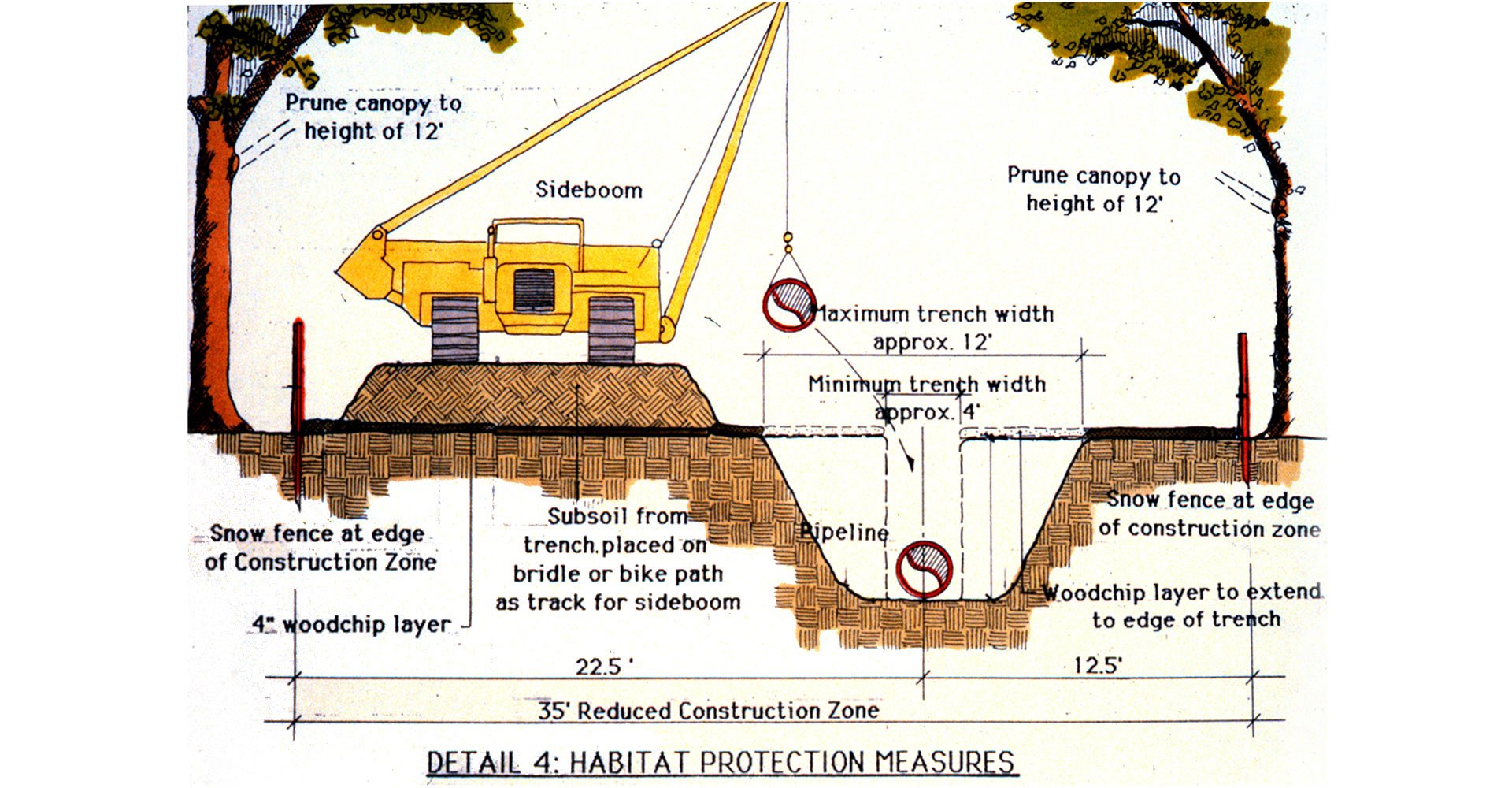
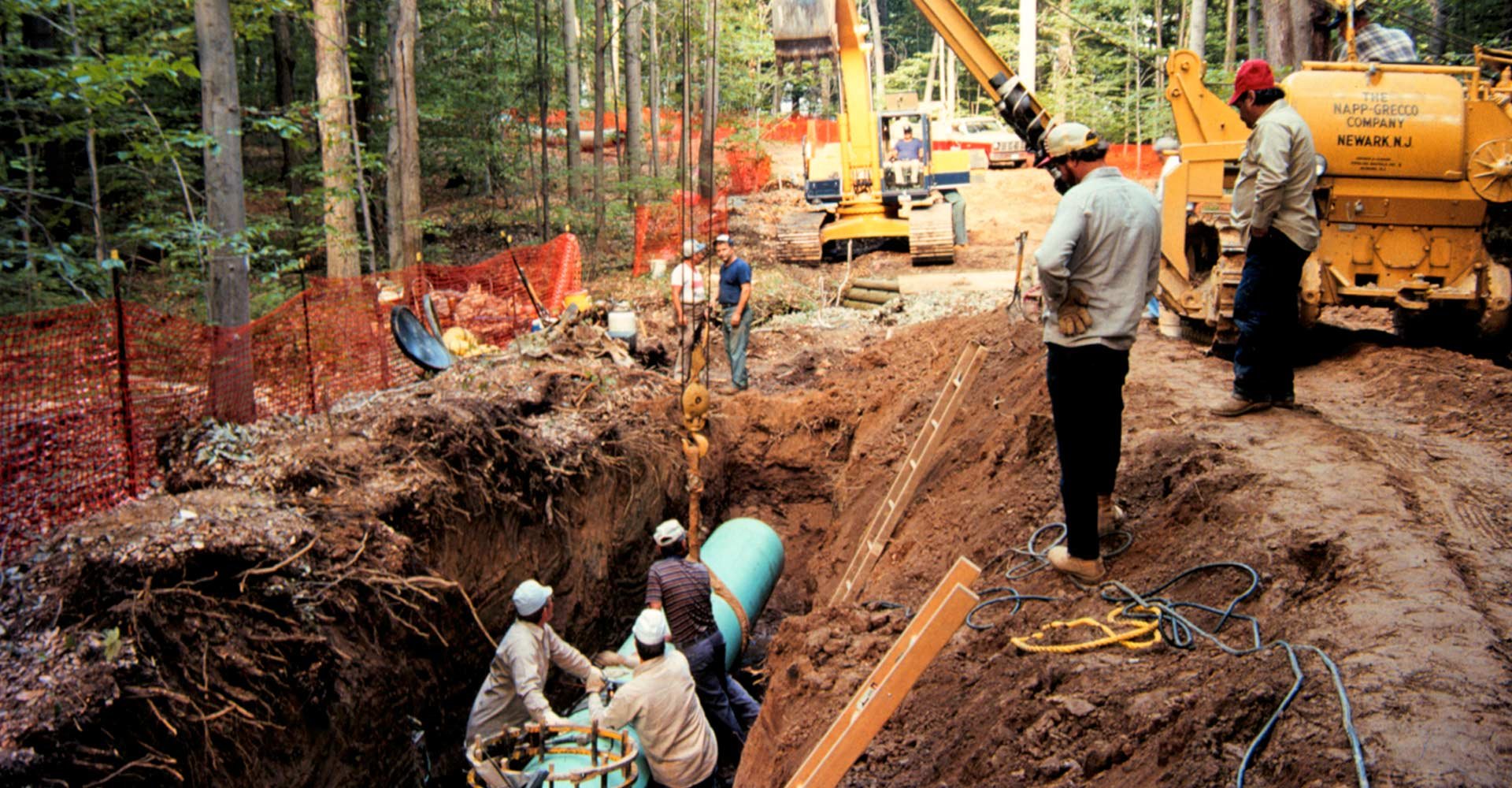
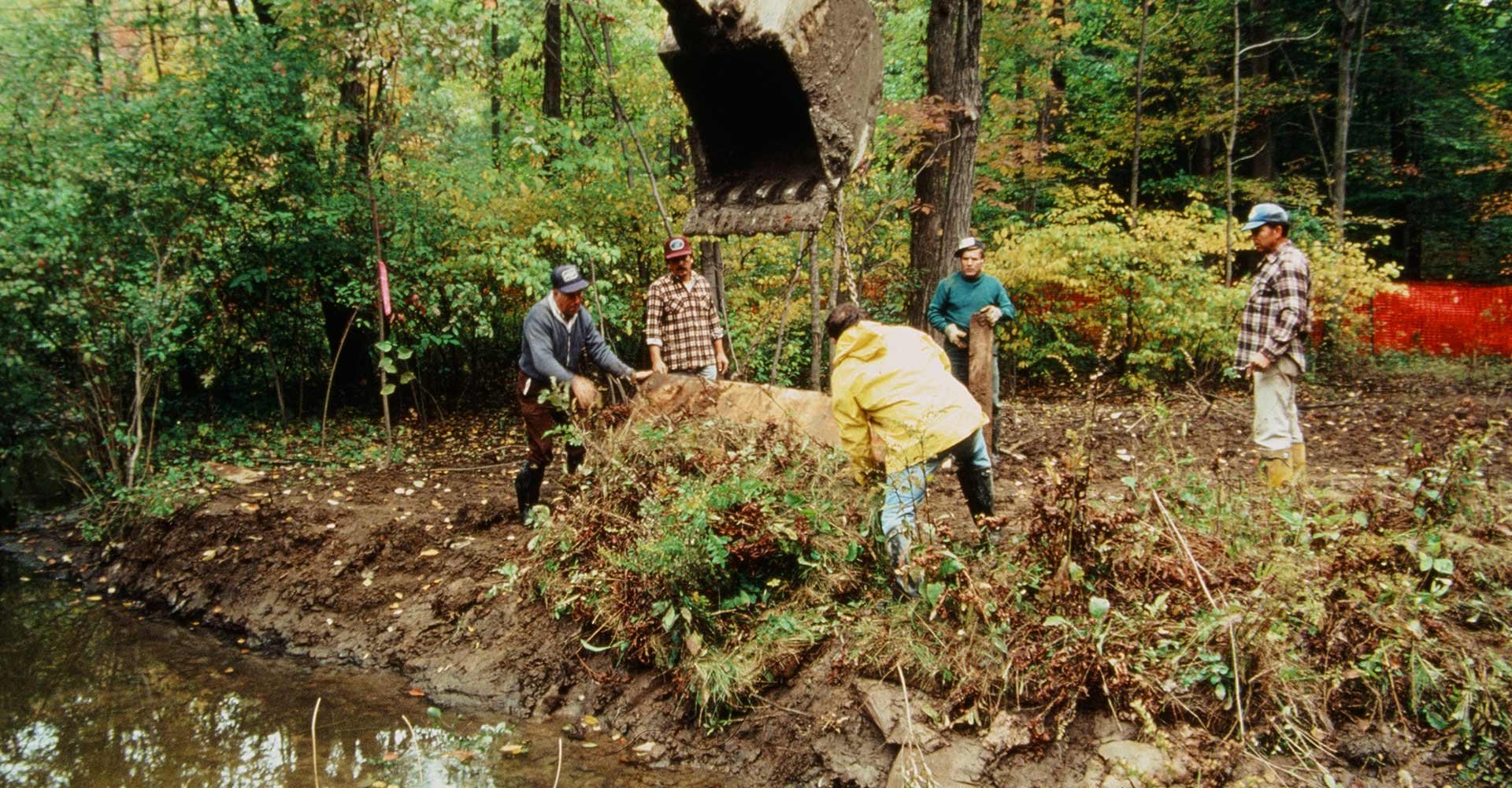
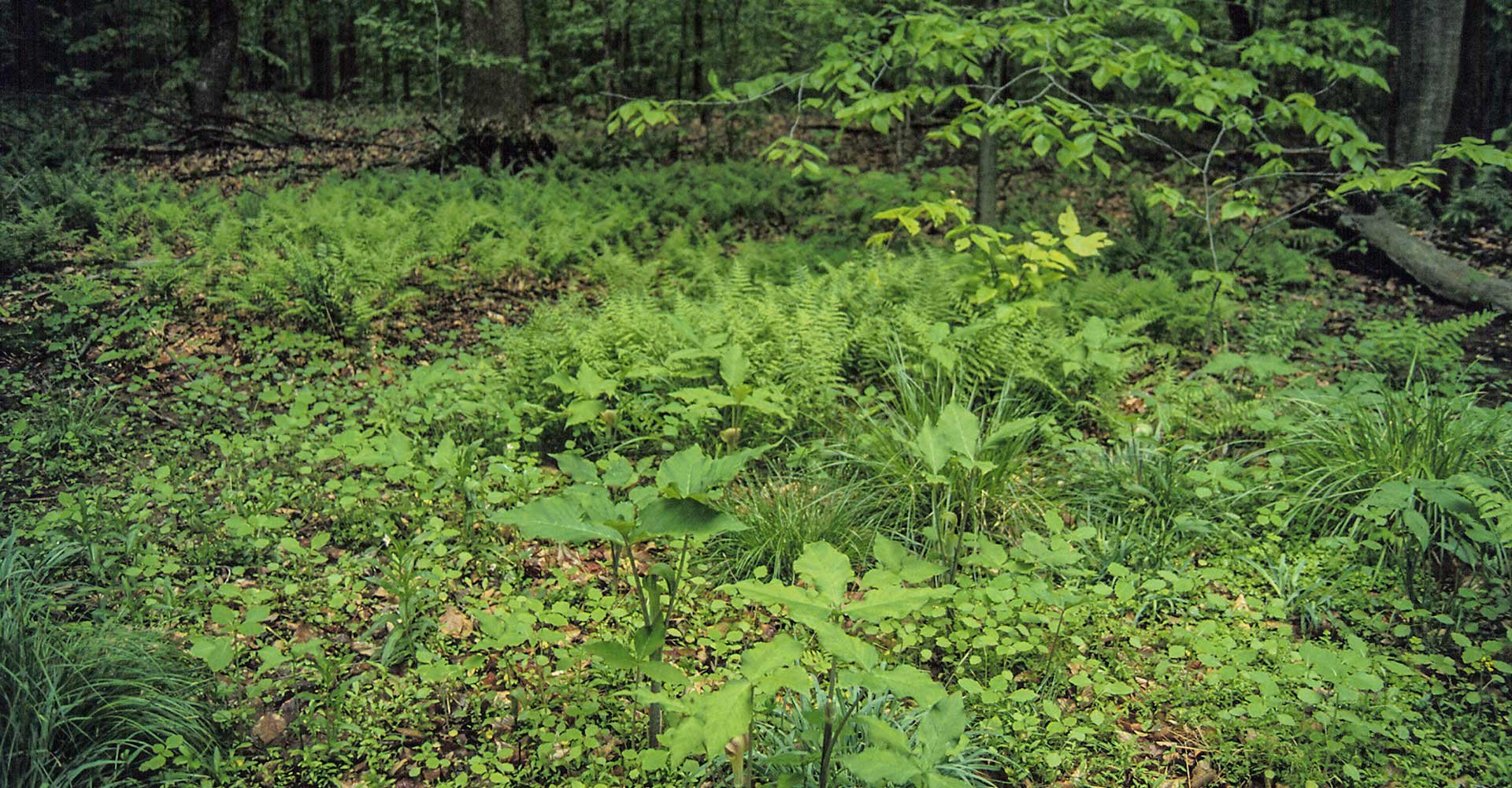
what happens when you fundamentally rethink the process of routing an laying-in pipelines and right-of-ways?
LOANTAKA BROOK RESERVATION PIPELINE CORRIDOR STUDY
The Algonquin Gas Transmission pipeline–which transports 2.74 billion cubic feet of natural gas per day between New Jersey, New York, and parts of New England–runs directly through Loantaka Brook Reservation. Andropogon worked with the Morris County Park Commission in the late 1980s to site the pipeline through this sensitive habitat using highly sustainable design and construction methods.
The project’s innovative installation methods included routing the pipeline in a meandering orientation (rather than a straight-shot); limiting the construction corridor to 35-feet (compared to the standard 75-100 feet); strategically felling trees (instead of clear-cutting), and skimming and replacing vegetated soil blocks from the pipeline corridor (rather than planting seed). Andropogon adapted this last technique from wetland-restoration methods and was the first firm to successfully apply it to wooded sites. In combination, these techniques left little need for habitat restoration. Most revegetation sprouted from the intact seed bank within the vegetated soil blocks. Young “whips” were planted to quickly reestablish a closed canopy overhead. This aimed to minimize pressure from invasive plant species and curb habitat fragmentation, two effects that plague traditional pipeline corridors. In addition to these efforts, Andropogon prepared stewardship guidelines to further enhance the landscape’s chance of success after construction.
To evaluate the long-term, ecological success of the design, construction and stewardship practices, Andropogon’s in-house research team monitored the site’s soil health and plant biodiversity. Nearly 30 years after construction, the resident plant communities closely matched the pipeline corridor’s healthy, pre-construction species.
PROJECT INFORMATION
Location: Morristown, NJ
Size: 15 acres
Role: Landscape Architect of Record
Services: Conceptual Design through Completion, Sustainable Site Design, Ecological Planning and Restoration
